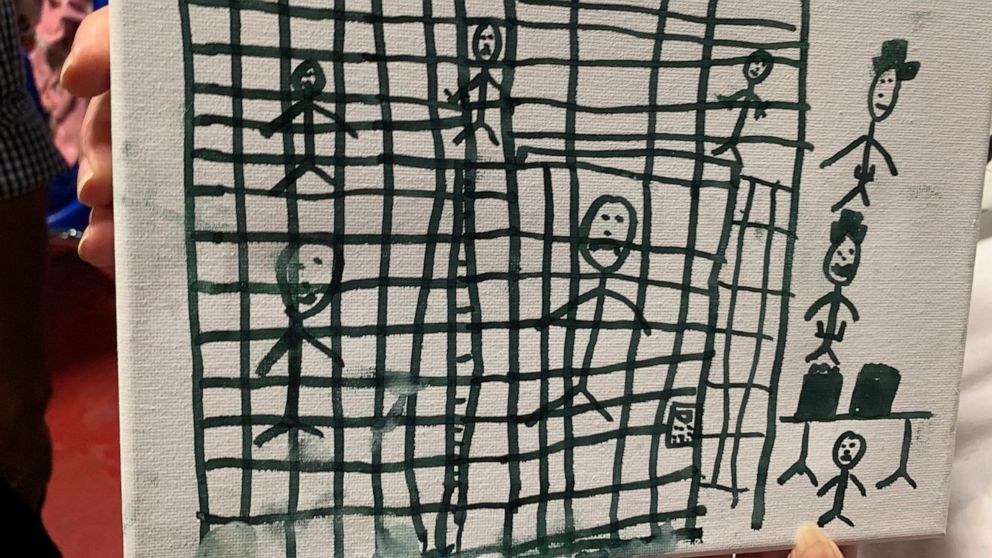
In one drawing, stick figures sleep on the ground under blankets watched by other figures with hats. Another picture has frowning stick figures behind what appears to be a chain-link fence. One shows two toilets in a small room. All of the drawings include imposing jail-like bars covering most of the canvas.
They were done by children asked to depict their experience in Border Patrol custody and photographed by an American Academy of Pediatrics volunteer last week. Their release follows unsettling warnings from a government watchdog about overcrowded South Texas facilities holding migrant families.
The report by the Homeland Security Department’s inspector general detailed inadequate food and access to showers. Photos showed people crammed into cells and women and children sleeping on the ground under Mylar blankets.
The three pictures were made by two 10-year-old children and one 11-year-old at a McAllen, Texas, temporary shelter. Two of the children were from Guatemala and it wasn’t clear where the third was from.
Dr. Sarah Gorza, president of the academy, said her organization wanted to make a point that children should not be in Border Patrol custody.
“It was a visual of what the children felt happened to them. It affected us,” she said. “They are living in those cells, cages. That’s what was on their mind when they were drawing.”
The American Academy of Pediatrics Immigrant Health Special Interest Group has maintained that Customs and Border Protection facilities are unhealthy and unsafe for children.
CBP did not immediately respond to phone calls and emails requesting comment.
Cathy Malchiodi, author of “Understanding Children’s Drawings,” said the sketches could reveal signs of traumatic stress.
Malchiodi said the picture offering a bird’s-eye view of five figures sleeping on the floor under blankets with two guards watching two exit doors could reveal that was the “dominant traumatic memory.” The child who drew almost nothing but two toilets may have been especially troubled by the smell, Malchiodi says.
“There are no people, just these toilets. My guess is maybe the smell was the dominant thing,” she said.





